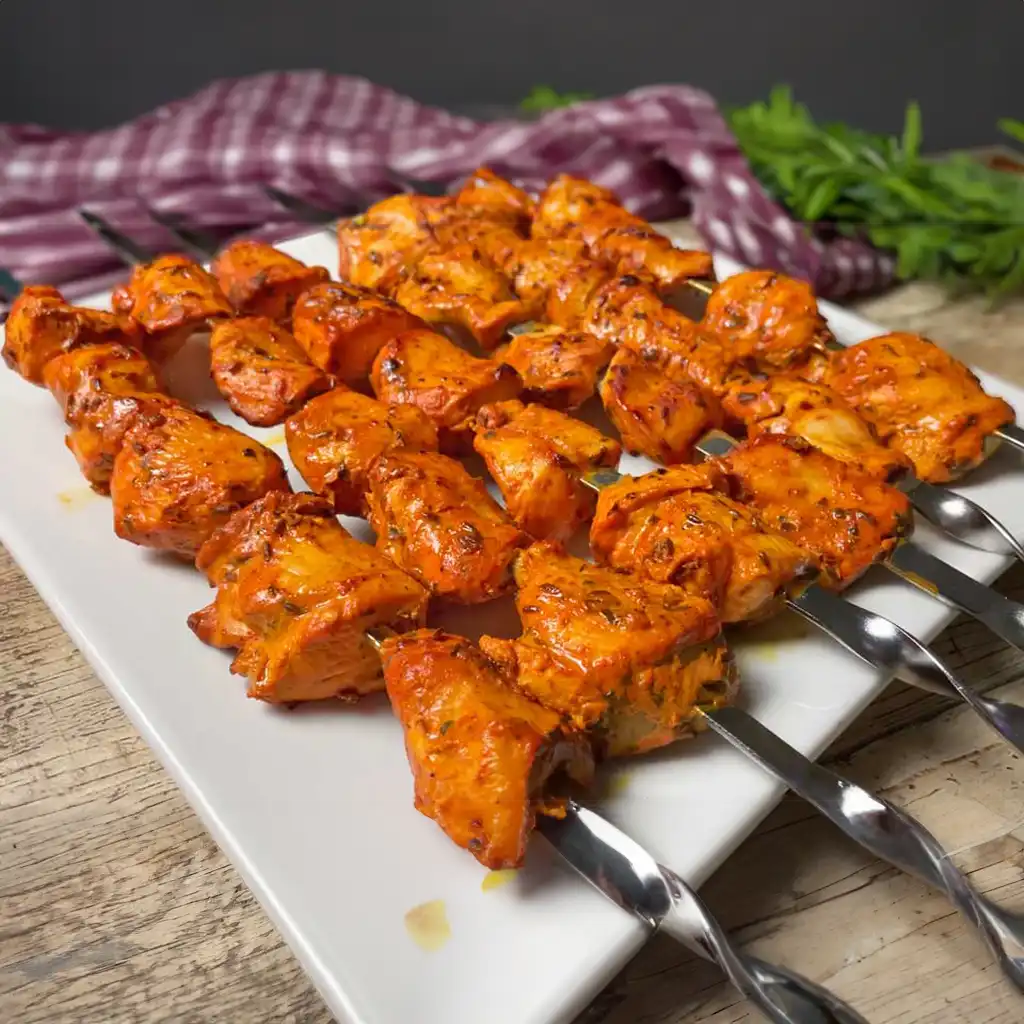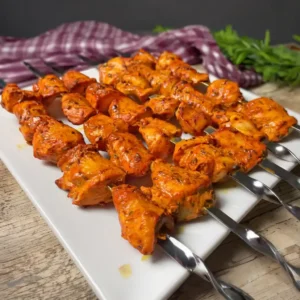
The tantalizing aroma of Chicken Tikka wafting through the air is enough to make anyone’s mouth water. Originating from the Indian subcontinent, this dish has become a beloved staple in households and restaurants worldwide.
Its roots trace back to the Punjab region, where it was traditionally cooked in clay ovens known as tandoors. However, with its popularity, it has evolved into various versions, each with its unique twist.
Creating Chicken Tikka at home may seem daunting to some, but fear not, for I have crafted a simple yet flavorful recipe that even beginners can master.
This dish encompasses tender pieces of chicken marinated in a medley of spices and yogurt, resulting in a burst of flavors with every bite.
Expert Tip: Prepare the marinade for the Chicken Tikka in advance, even the night before, to allow the flavors to meld together and infuse into the chicken for a more robust taste.
Chicken: Chicken provides the protein base for this dish. Its mild flavor allows it to absorb the rich flavors of the marinade while remaining tender and juicy after cooking.
Yoghurt: Acting as a tenderizer, yogurt helps to break down the proteins in the chicken, resulting in a more succulent texture. It also adds a creamy consistency to the marinade, ensuring it coats the chicken evenly.
Spices: A blend of spices including salt, chili powder, turmeric powder, tandoori masala, cumin seeds, and dried fenugreek leaves infuses the chicken with layers of complexity and depth. Each spice contributes its unique flavor profile, enhancing the overall taste of the dish.
Mint Sauce and Lemon Juice: These ingredients add a refreshing zing to the marinade, balancing out the richness of the spices with their bright and tangy flavors.
Oil: Oil helps to bind the marinade together and prevent the chicken from sticking to the grill or oven tray during cooking. It also aids in achieving that perfectly golden and crispy exterior.
Expert Tip: Preheating your oven or grill is crucial to achieving that perfectly cooked Chicken Tikka.
Expert Tip: Use Greek yogurt for a creamier texture. Greek yogurt works exceptionally well in the marinade due to its thicker consistency.
Marinating the chicken for at least 30 minutes is recommended to allow the flavors to penetrate the meat. However, for best results, you can marinate it for up to 24 hours in the refrigerator. The longer marination time will result in more flavorful and tender chicken tikka.
Yes, absolutely! If you prefer the charred and smoky flavor imparted by grilling, you can cook the chicken tikka on a preheated grill instead of in the oven. Simply thread the marinated chicken onto skewers and grill over medium-high heat for about 10-12 minutes, flipping halfway through, until cooked through and charred on the edges.
While tandoori masala adds an authentic flavor to the chicken tikka, you can omit it if you don’t have it on hand. The dish will still be delicious thanks to the combination of other spices. Feel free to adjust the spice levels according to your preference.
Yes, boneless chicken thighs can be used in place of chicken breasts for this recipe. Thigh meat tends to be juicier and more flavorful, making it an excellent choice for chicken tikka. Adjust the cooking time accordingly, as thighs may require slightly longer to cook through compared to breasts.
The chicken is cooked through when it reaches an internal temperature of 165°F (75°C) as measured by a meat thermometer. Additionally, the juices should run clear when pierced with a fork, and the chicken should be firm to the touch. Avoid overcooking to prevent the chicken from becoming dry.
Here are some more recipes for you to enjoy! If you my recipes don’t forget to rate and leave a comment.
If you have any recipe suggestions, please do not hesitate to ask me. A great way to stay in contact with me is through Instagram, Facebook, Twitter and YouTube. Don’t forget to tag me @CookwithNabeela in your recipe photos!

Subscribe now to receive my latest recipes directly in your inbox. Stay up-to-date and never miss out!

I love to cook! I want to share with you my favourite, delicious family-friendly recipes. I want to inspire you to create fantastic food for your family every day.
Add your first comment to this post